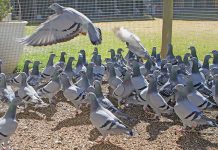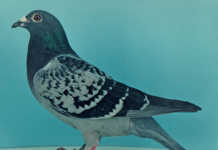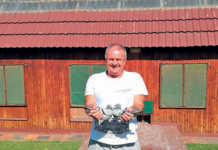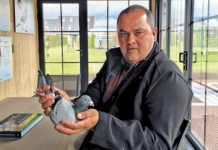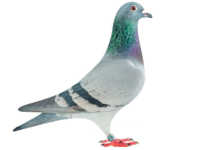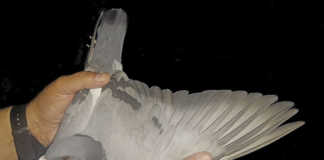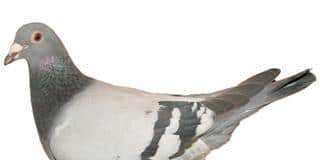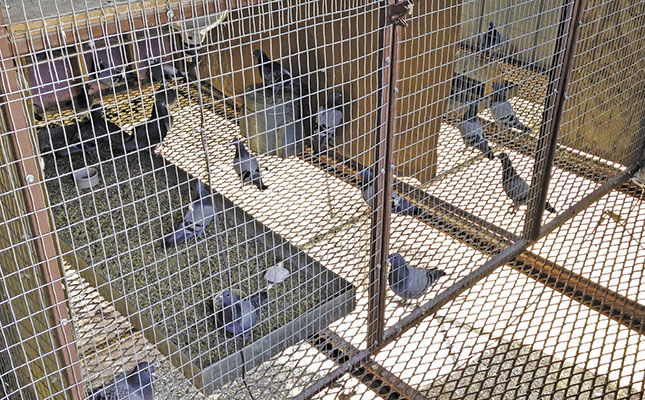
Given the declining membership in pigeon-racing clubs, it’s refreshing to have been approached by a few people in recent weeks who want to take up the sport. And I’m only too happy to provide some pointers…
READ:Keeping your pigeons healthy
Joining a club
Ensure that your loft falls within the nearest pigeon club’s ‘boundaries’. Some clubs are strict about this. If your loft lies a little outside the prescribed boundaries, and there’s no other club you can join, you can be accepted as a member after a majority vote.
The clubs within an area are affiliated to a federation, union or a combine; they in turn must belong to the SA National Pigeon Organisation (Sanpo), which has a mandate from the SA Sports Confederation and Olympic Committee to regulate the sport. The committee only allows one ‘mother organisation’ per sport. If your application for membership is unsuccessful, you must be given the reasons in writing. If these sound unfair, you may dispute the decision with the region’s umbrella organisation – the federation, the combine or union to which the club is affiliated.
Time management
Once accepted by a club, you automatically become a member of the regional umbrella body and Sanpo. Membership fees are paid annually and can be anything from R100 or more. Sanpo membership is R50/year. However, if you can’t fit pigeon racing into your schedule, please don’t start. Your ‘routine’ will be as follows:
- Travelling to the club – In some regions, travelling to the club to attend meetings and enter races may involve a journey of more than 200km there and back, and your work schedule must allow time for this.
- Entering race events – The basketing of pigeons for a race event is done at the clubhouse on Fridays for shorter distances, or on Thursdays for longer distances. This gives the pigeon truck enough time to reach the liberation point and allow the pigeons a rest prior to release.
- Race day – Saturday is race day. Most races are completed between midday and the late afternoon, except for a few long-distance events, when the pigeons may not have returned by nightfall – which extends your racing weekend into Sunday.
- Strike-out – After a race, all the competitors assemble at the clubhouse again to determine the winning positions.
- Breeding/training – Breeding pigeons in your own backyard requires a further investment of time and devotion to ensure proper health management. Training a racing team requires schedules for home- and road-training, which must be done after sunrise during the morning exercise session or at least an hour before nightfall.
- Social activities – There are also social events such as meetings, braais and other ‘pigeon functions’. If you’re not a social person, pigeon racing may not be for you.
There’s nothing more disappointing than pigeon fanciers sitting in different corners at a club preferring their own company amid what should be the most enjoyable pastime of all – socialising about pigeon racing!
Stock loft vs race loft
Unless someone else is going to breed your youngsters to home and race every year for you, you’ll have to keep your own stock pigeons for breeding. These are kept in a separate loft. You can also opt to breed a round or two from your top racers in the race loft annually, but as these older racers get on in years, they’ll have to be removed from the race team to make space for the younger batch of racers. So you’ll still need a separate loft.
The race team
Most old-timers advise beginners to buy a kit of youngsters to start with and learn the ropes before acquiring their own stock at great expense. The main advantage of buying a kit of babies is that it fills up your race loft and enables you to form a race team.
You need at least 60 youngsters to participate in races. Most clubs have a 10- to 20-bird limit per race, so from 60 birds you can alternate your teams every two or three weeks to allow the others a rest in between, so they don’t suffer burnout.
My advice is to buy a few young bird kits and also to study the top pairs in the lofts of champion fanciers and, in time, purchase a few selected pairs to breed your own babies.
Contact Thomas Smit on 011 680 4778 or at [email protected]. Please state ‘Pigeons’ in the subject line.
This article was originally published on 12 July 2013 in Farmer’s Weekly.


